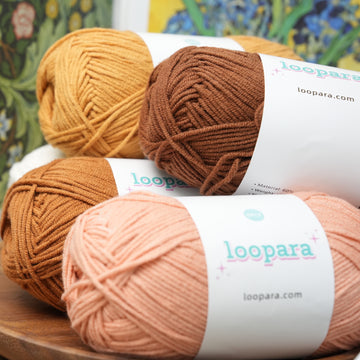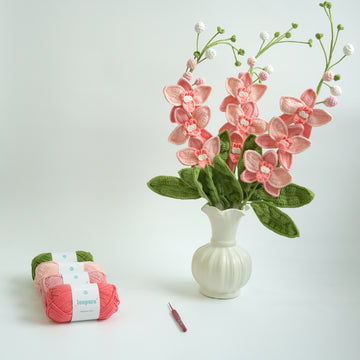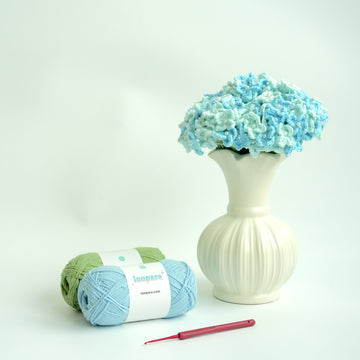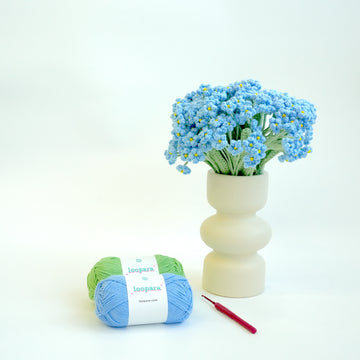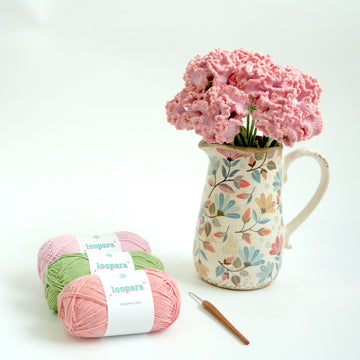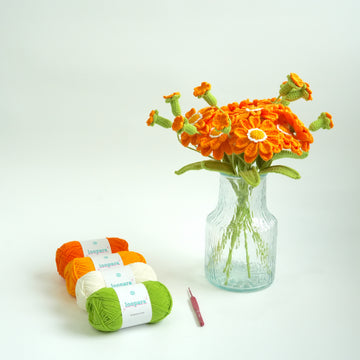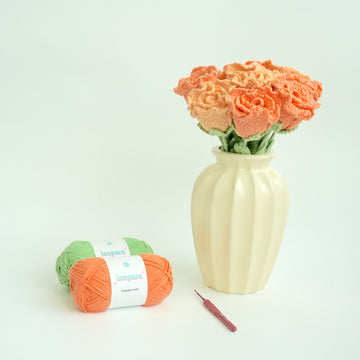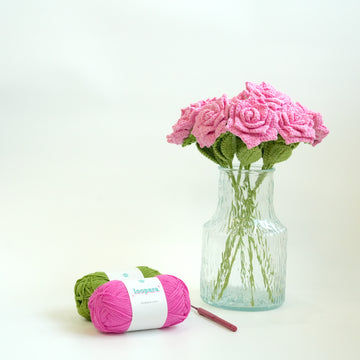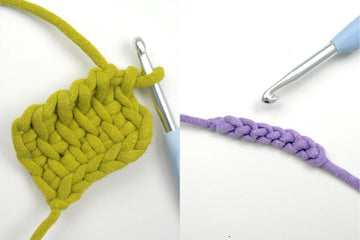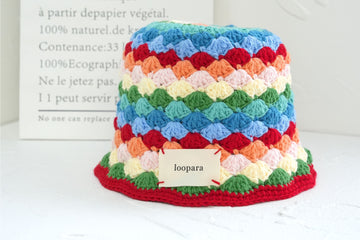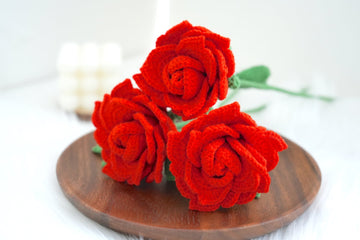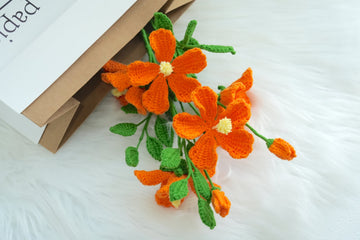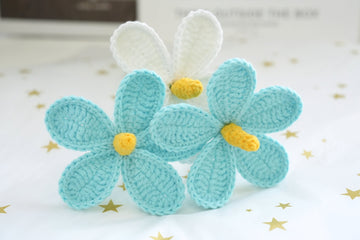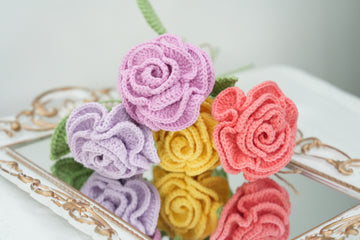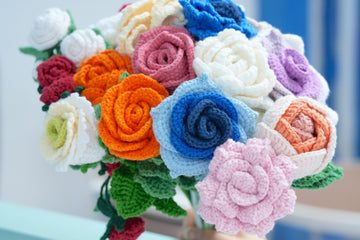Have you heard about Tunisian crochet and are wondering how it’s different to normal crochet? Then we’ve got you covered! We’re going to look at Tunisian crochet vs crochet.
We’ll investigate the key differences between the two crafts. We’ll learn why Tunisian crochet has as much in common with knitting as normal crochet. And we’ll discover whether one is easier than the other.
Ready to find out more? Let’s get started!
What’s the difference between Tunisian crochet and crochet?
There are a range of differences between Tunisian (also known as Afghan) and ordinary crochet:
- The hook you use
- The way you hold the hook
- The way you form stitches
- The types of stitches
- The properties of the fabric you make
- How much yarn you use
- How quickly you work up fabric
Let’s look at each of these in turn.
1. Tunisian vs standard crochet hooks
With both Tunisian crochet and crochet, you use a single hook to create stitches. That’s quite different from knitting, where you use two needles.
But the type of hook you use in Tunisian crochet is different from a standard crochet hook. For a start, it's much longer. While a standard crochet hook is usually about 6 inches long, a Tunisian crochet hook will be between 11 and 14 inches.
For bigger pieces, you may find yourself using a Tunisian crochet hook with a cable attached and a stopper at the end of it. That will give you room to hold the longer rows of stitches.
And if you’re working in the round, you can use a double-ended Tunisian hook.
2. Hook grips in Tunisian crochet vs standard crochet
With normal crochet, there are two basic ways you can hold your crochet hook. The “pen grip” is where you hold the crochet hook like – you've guessed it – a pen. With the “knife grip”, you hold the hook as though it were a knife being used to slice vegetables.
But the longer length of the Tunisian crochet hook demands a different approach. With this, you’ll find the way you’re holding the hook is similar to the way you’d hold a knitting needle.
You’ll also find that Tunisian crochet hooks lack the thumb-rest which appears on a standard hook. This can be a bit of an adjustment. But after some practise, many people find it offers them more flexibility.
3. Making stitches in Tunisian crochet

Tunisian Sample
The reason the hook and your grip are different in Tunisian from traditional crochet is that you form stitches differently.
Instead of creating stitches one at a time, you produce a whole row in one pass. That means the crochet hook needs to be long enough to hold all the stitches in the row.
Working a row of stitches onto the crochet hook is known as a “forward pass”. Working all the stitches off the hook again is known as a “return pass”. For those familiar with knitting, this will feel quite familiar.
And unlike normal crochet, a row of stitches in Tunisian crochet doesn’t act as scaffolding to support the stitches below. That means that if you make a mistake – like dropping a stitch – you can put it right without having to unpick multiple rows.
4. Types of stitch in Tunisian crochet vs crochet
The stitches themselves are different in Tunisian and traditional crochet too.
The most important stitch in Tunisian crochet is the Tunisian simple stitch. This forms the basis for a huge number of more complex stitches. (Tunisian crochet has more than 400 different stitch types!)
The next stitch to learn is the Tunisian reverse stitch. And in another similarity with knitting, there are also Tunisian knit and Tunisian purl stitches.
With traditional crochet, on the other hand, the basic stitches are the chain, single and double crochet. (Or if you’re using UK terminology, the chain, double and treble crochet.)
Also Read: 44 Different Types Of Crochet Stitches
5. Tunisian crochet vs ordinary crochet fabric
All these differences not surprisingly result in a fabric that’s quite different to the one produced by traditional crochet. Tunisian crochet produces smaller stitches and a tighter texture that’s arguably more like knitting.
It has less horizontal stretch than standard crochet fabric. But it has plenty of vertical stretch, giving the fabric “memory” in this direction. In other words, if you stretch it lengthways, it will bounce back.
The edges are more even than in standard crochet too. That’s because the first and last stitches of each row form a series of “V”s. The appearance is similar to the top edge of ordinary crochet stitches.
That neat edge gives the fabric a fine finish. And it also means you’ll get a clean line when joining pieces together.
As a rule, Tunisian crochet will give you a thicker, denser fabric too. That makes it a good choice for projects like cosy blankets or scarves. And it also works well for sturdier objects like tote bags.
One downside to be aware of is that Tunisian crochet fabric does have a tendency to curl up at the edges. You can put that right with a process known as blocking. This basically involves wetting the fabric, stretching it out, and holding it in place as it dries.
Alternatively, using a double-ended Tunisian crochet hook will produce a fabric with less curl.
6. Yarn use in Tunisian crochet vs crochet

Traditional crochet uses considerably more yarn than knitting. You can expect to use between 25% and 30% more yarn to crochet the same area of fabric.
Tunisian crochet uses a similar amount of yarn to traditional crochet. The exact combination of stitches you use will determine whether it’s more or less yarn-hungry.
7. Speed of work
With traditional crochet, it generally takes less time than knitting to work up a piece of fabric of the same area. That’s because the stitches are bigger.
The stitches in Tunisian crochet, on the other hand, tend to be smaller than traditional crochet. But some people find the method of creating a row of stitches at once, rather than one at a time, offsets this.
Quite how fast you work up your fabric will depend on your technique and proficiency. But for many people, Tunisian crochet works up fabric in roughly the same time as traditional crochet.
Also Read: How Long Does It Take to Learn to Crochet?
Which is easier, Tunisian crochet or crochet?
So which is easier to master – Tunisian crochet or traditional crochet?
There’s no simple answer to this. It will depend on your personal style, preferences and experience.
If you’re already familiar with knitting, Tunisian crochet may seem like less of a jump than the traditional kind. The grip on the hook is similar to the way you hold a knitting needle. And keeping a row of stitches on the hook, instead of stitching one at a time, will be familiar too.
Others may find the longer Tunisian hook harder to manipulate than a traditional crochet hook. And it’s generally easier to correct mistakes in traditional crochet than the Tunisian variety.
Also Read: Is Crocheting Hard?
Hints and tips for successful Tunisian crochet and crochet
Here are a few hints and tips to help you as you learn Tunisian or traditional crochet.
1. Choose resources that suit your learning style.
There’s an enormous range of material out there to help, whatever style of crochet you’re learning. If you enjoy the social side of crafting, join a local group or online community. If you enjoy reading quietly, read a book or check out blog posts. And if you like to learn from watching others, there are lots of great videos online.
2. Practise makes perfect.
No-one is brilliant at either Tunisian or traditional crochet when they first start out. Stick with it, and you’ll soon start to become comfortable with different stitches and techniques.
3. Take things slow.
Try to avoid the temptation to rush into making something before you’re confident with the basic stitches. That’s particularly important with Tunisian crochet, where correcting mistakes can be difficult and time-consuming. And that goes double if you don’t notice you’ve gone wrong straight away. But…
4. Don’t worry about making mistakes.
Getting things wrong is part of the process, and everyone does it! Take it as evidence that you’re stepping outside your comfort zone to learn new things. Making mistakes also means that you can practise putting them right. That’s an important part of your crocheting repertoire.
5. Celebrate your successes, large and small.
Have you successfully mastered a new stitch? Learned how to increase or decrease? Or completed a complex crochet project you’ve designed from scratch? Celebrate your achievements along every part of your learning journey. Marking how far you’ve come will keep you motivated to develop new skills.
Summing up: Tunisian crochet vs crochet
You can think of Tunisian crochet as a hybrid between crochet and knitting. Like crochet, it uses only one needle. But like knitting, you complete a row of stitches at a time.
Tunisian crochet uses a longer hook than traditional crochet. Sometimes, for crafting larger pieces, it’s attached to a cable and stopper too.
And Tunisian crochet introduces a whole range of different stitches. As well as the Tunisian simple and reverse stitches, there are Tunisian knit and purl stitches.
There are different views on whether Tunisian or traditional crochet is easier to learn. Much will depend on your previous experience. If you’re already an accomplished knitter, Tunisian crochet may feel more familiar.
But either craft can give you hours of pleasure. Whatever you choose, we hope you enjoy your next project.


